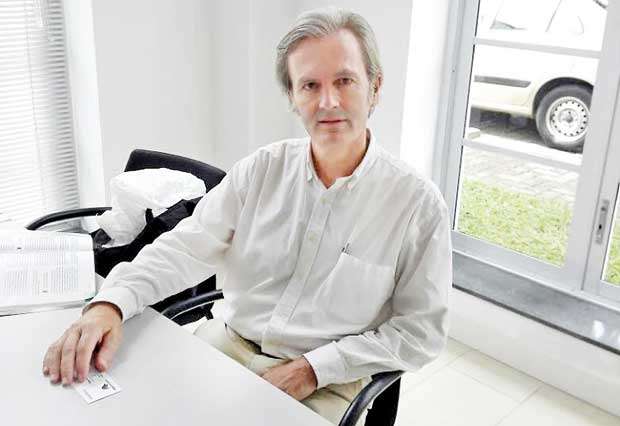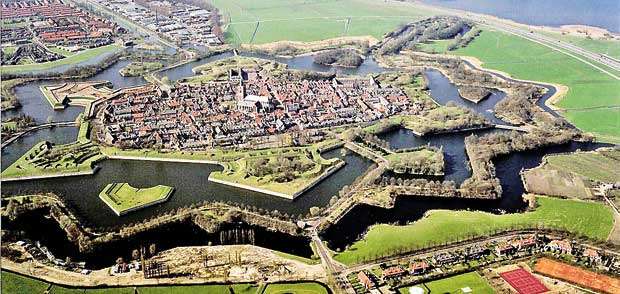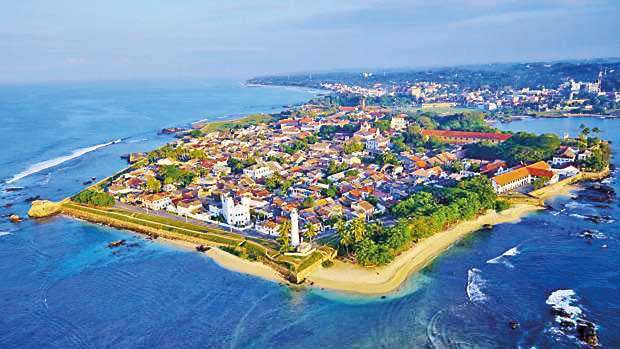Reply To:
Name - Reply Comment

 Leading Dutch Archaeologist Oscar Hefting was in Sri Lanka recently to visit the Dutch heritage sites in the country and discuss measures for their proper conservation. The Dutch East India Company drove out the Portuguese from Sri Lanka in 1636 and established its rule over the maritime provinces. It ended after the British conquered Sri Lanka and ousted the Dutch.
Leading Dutch Archaeologist Oscar Hefting was in Sri Lanka recently to visit the Dutch heritage sites in the country and discuss measures for their proper conservation. The Dutch East India Company drove out the Portuguese from Sri Lanka in 1636 and established its rule over the maritime provinces. It ended after the British conquered Sri Lanka and ousted the Dutch.
There is a lot of Dutch heritage in Sri Lanka. There are 30 fortifications. If you do not use them, they will be lost. You have to use them in terms of museums or restaurants. You should have new reasons to protect them. Like in Galle, for instance, people are working hard to keep this heritage alive. They can earn money because of tourism. There is one heritage site called Naarden in the Netherlands. It is more like Galle. Jaffna fort is also similar to Nardeen Fort. The building traditions came from the Netherlands to Sri Lanka. Therefore, it is good to cooperate with each other and work hard. There are 22 Dutch forts in Sri Lanka according to a map from 1751. Later, there were more. Altogether there are at least 30 forts here. The Dutch were here for elephants and cinnamon. What is needed is to make an inventory of what is existing. We combine the Sri Lankan knowledge with Dutch knowledge. You have a lot of expertise with the National Archives and the Department of Archaeology.
restaurants. You should have new reasons to protect them. Like in Galle, for instance, people are working hard to keep this heritage alive. They can earn money because of tourism. There is one heritage site called Naarden in the Netherlands. It is more like Galle. Jaffna fort is also similar to Nardeen Fort. The building traditions came from the Netherlands to Sri Lanka. Therefore, it is good to cooperate with each other and work hard. There are 22 Dutch forts in Sri Lanka according to a map from 1751. Later, there were more. Altogether there are at least 30 forts here. The Dutch were here for elephants and cinnamon. What is needed is to make an inventory of what is existing. We combine the Sri Lankan knowledge with Dutch knowledge. You have a lot of expertise with the National Archives and the Department of Archaeology.
That is to make sure that the heritage sites are not overbuilt by new structures. You have to realize that this is historical heritage.
Some are very well looked after. Galle fort is an example. It is well taken care of. Some buildings are really in trouble though. At least there is the Galle Heritage Foundation.
That is a delicate discussion. As I understood, there was no permission to start special buildings. The cricket ground does not seem to be the problem, but the smaller buildings.

Happy about the co-operation from SL authorities
Dutch archaeologist says it’s similar in Brazil
But such work is difficult in former Dutch colonies like South Africa and Indonesia
Yes. That is in the hands of the UNESCO, however. It is a diplomatic affair.
No. It is a matter lying with UNESCO. One of the important things to do. Before you start building, you should know that you are working in a protected area. It appears that damage has already been done because the building stands on the heritage site.
The English destroyed the fort of Colombo. You can find back parts and make it a tourist attraction site. The English destroyed the fort of Kalutara as well. In the north, restoration was difficult because there was a war going on. Some of the forts, like the ones in Mannar and Jaffna, were damaged. But, restoration work is progressing now. I am happy to see the energy going on here with the help of the Dutch embassy for restoration work in Jaffna.
They have planned to create a museum in Jaffna as I understood. Then, they can ask for an entrance fee. It is not the case now. You can restore the Church. That is an idea. The original Dutch Reformed Church was destroyed there. These are things to be put in use. Then, you can attract tourists as these are in fascinating locations.
Every country is different. It is much disputed in Indonesia because the Dutch rule ended there with the war. The independence of Indonesia came after war with the Dutch. It is tricky in Indonesia as a result. In South Africa, there is a strict line between the Blacks and Whites over why the Dutch were there. There have always been discussions regarding discrimination between the Blacks and the Whites. It has been positive in the United States and Brazil as in Sri Lanka. They have a positive attitude towards the Dutch period.
You have to take it as part of history. When bad things happened in your youth, you had to give them a place to see how you were created. In the Netherlands, we had German occupation during World War II. They built a lot of bunkers and forts in the Netherlands. It is important for our history. Let’s take care of it.
This is a good example. Sri Lanka tourism cooperates well. The Department of archaeology is very much willing to assist. The attitude of your government is very positive.
There is financial assistance. The Dutch embassy is supporting identification. Your Department of Archaeology is willing to cooperate. So does the Department of National Archives. When I am back in the Netherlands, I will be meeting a group of Sri Lankans for knowledge exchange.
Surprisingly, there is enormous influence still in Sri Lanka. Burghers are still a community here. They are telling us about their influence and network. It is a strong line from a historical perspective. You have many Sri Lankans who have been to the Netherlands already. There is a positive link because of our historical relations. Your ambassador in the Netherlands told us that the Dutch were very good at infrastructure development -- transport, irrigation, etc.
We intend to come back here next year. That is to have this exhibition. We will have it probably in Matara. We are also looking at Galle and Jaffna.

Surprisingly, there is enormous influence still in Sri Lanka. Burghers are still a community here
Some are very well looked after. Galle fort is an example. It is well taken care of. Some buildings are really in trouble though
Yes. I did it in Brazil. We did excavation. They are having a museum now. We are working on Dutch fortifications overseas. Next year, we are going to have an exhibition in South Africa. We are going to have another in West Africa.
It differs from country to country. In Brazil, it is very good. It is very difficult in South Africa. It is very good in Sri Lanka. The support is very positive. Even I think there is money needed for restoration to be done in the right way and the inventory completed. It fits into a tourism programme.
Not that I know of. But the exchanges are there. Technicians can be used on forts and other sites.
Sri Lanka is positively portrayed there. A lot of Sri Lankans go there. It is an ideal country for a holiday.
Well, in the first place, Sri Lanka is an economically important island. A lot of investments were sent here. Sri Lanka was very important for the Dutch economy during the colonial era. That is for cinnamon and elephants. They wanted to have a monopoly on cinnamon here. That is why all these forts were here. Building forts is very important.